Poll Results of May 7
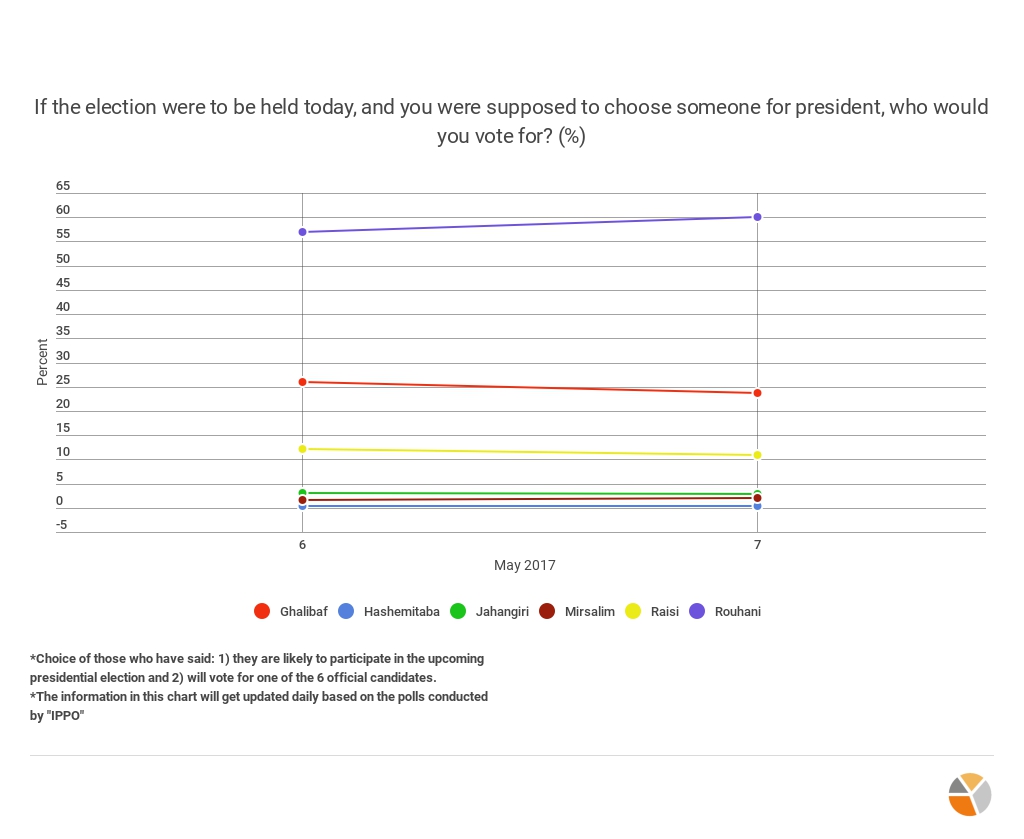
The Vote to Elect the President:
About 60 percent of people who say 1) they will definitely or likely participate in the May 2017 election and 2) are inclined to vote for one of the six available candidates, have chosen Hassan Rouhani as their first choice. In other words, if the election were to be held today, Hassan Rouhani would have probably been elected president in the first round of the election. (see the above chart).
However, in the coming days by carrying out more pre-election polls, and as the election day gets closer, it can better be determined whether these patterns will hold steady or they will shift and transform.
It is notable that 36% of voters remain undecided at this time. The undecided voters’ turnout can drastically change the current ranking pattern among candidates. The undecided voter’s final decision can also potentially take the elections to a run-off.
Currently if we consider the entire population, one-quarter is voting for Rouhani, one-tenth for Ghalibaf and one-twentieth for Raisi.
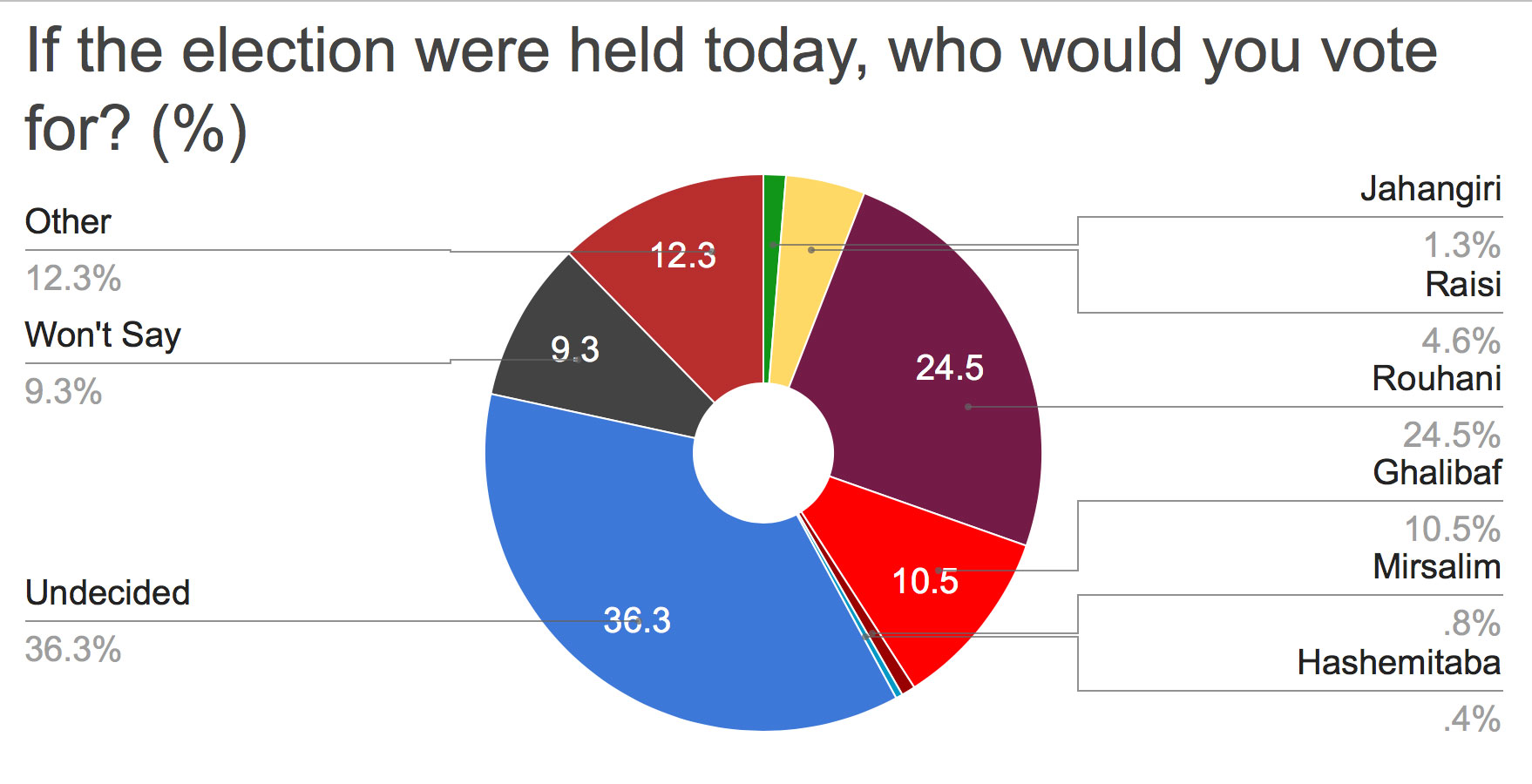
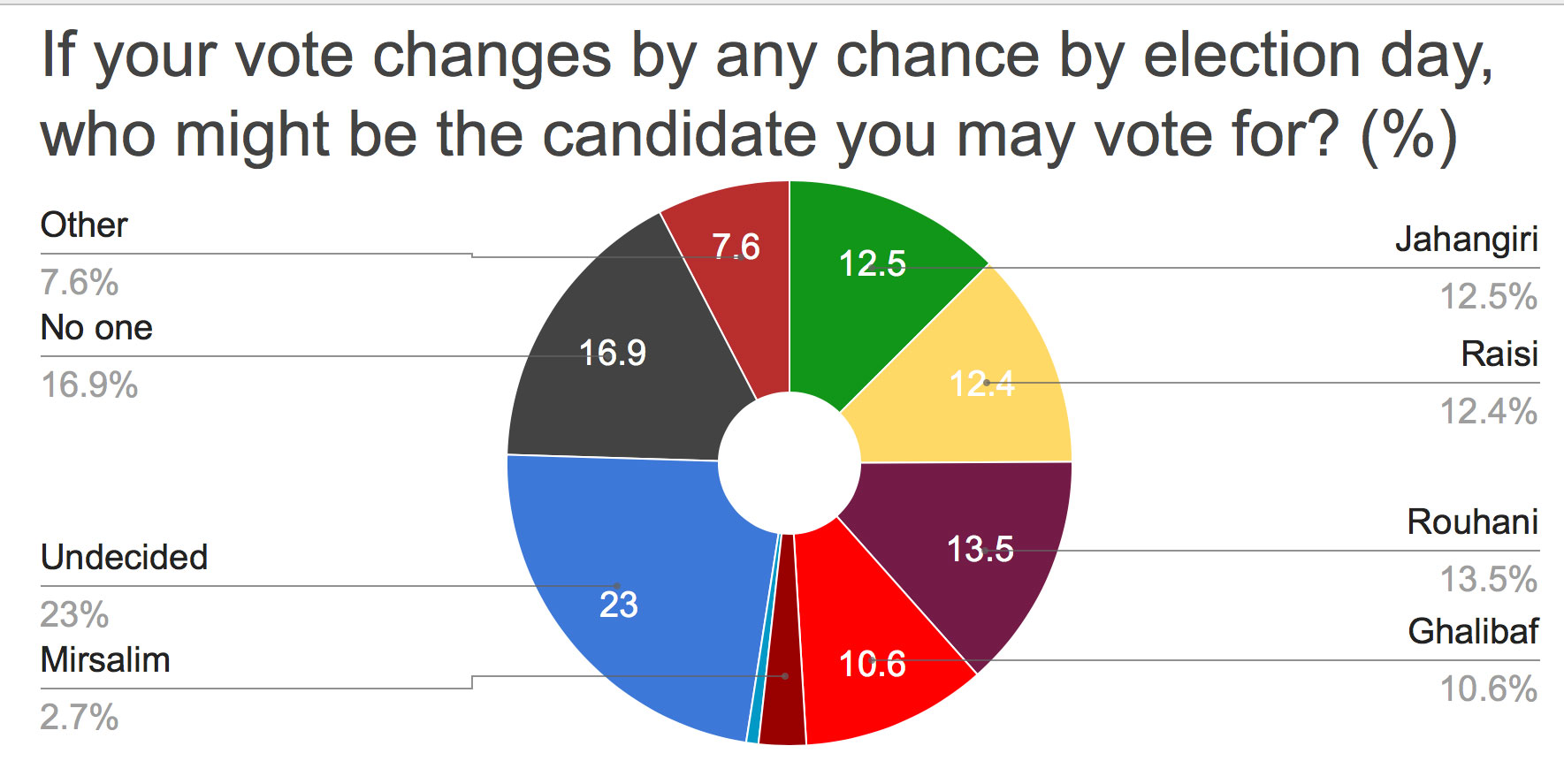
Second Choice Voter Preferences
Respondents were asked if they were to change their minds by election day, which candidate they’ll choose to vote for. The response to this question generates a different pattern than the first-choice candidate results.
Even though Hassan Rouhani still remains the front-runner with 13% of the votes, but here, Eshaq Jahangiri, Rouhani’s vice president, and Raisi both take the second place with about 12% of the vote of the respondents of this poll. Ghalibaf, Hashemitaba and Mirsalim follow them in descending order. Eshaq Jahangiri, Rouhani’s current vice president, has the support of 12%. Raisi is sharing the same rank with Jahangiri and has 12% of the votes of the respondents of this poll. After Jahangiri and Raisi, respondents choose Ghalibaf, Hashemitaba and Mir-Salim in a descending order.
However, still a quarter of the respondents are undecided and 17% of them stand firm with their first choice insisting on not having a second choice candidate.
The Most Unfavorable Candidate
Most respondents declined to indicate which candidate is so unfavorable that they would not vote for him under any circumstance. In other words, almost 60% of the respondents either say that no one among the candidates is that unpopular in their view, or that they cannot or do not wish to name the most unfavorable candidate.
The ranking for the most unfavorable candidate is similar to the ranking of the most favorable candidate.
The highest rating of unfavorability is of Hassan Rouhani with nearly 8%, Ghalibaf (5%) and Raisi (%4) follow Rouhani. Hashemitaba, Mirsalim, and Jahangiri are standing in a descending order of unpopularity.
Jahangiri with less that 1% stands as the least unfavorable candidate.
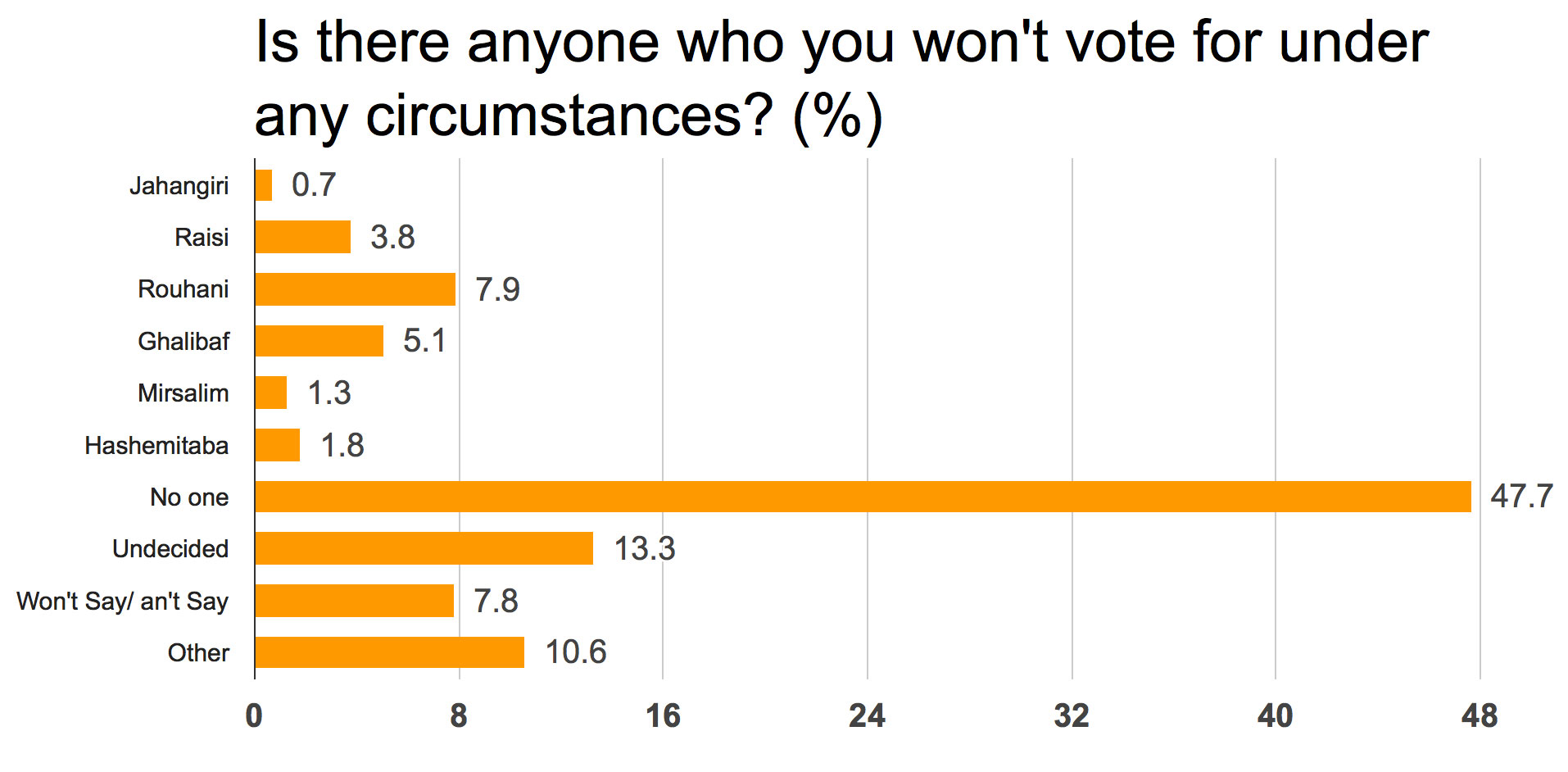

Respondents Predicting Election Results
Respondents’ forecasting of the election results and the winning candidate will portray the election milieu and distinguish between respondents’ own inclination and he or she’s predictions of the final outcome.
In this poll, respondents’ predictions about a particular candidate as having a winning chance does not differ much from their inclination towards candidates.
In fact, the pattern of respondents’ prediction of the election outcome resembles that of the first choice candidates with Rouhani, Ghalibaf, and Riais ranking first to third respectively.
Yet 40% of the respondents say that they cannot guess or predict the outcome.
Respondents’ Prediction vs. Inclination towards a Candidate
Respondents who predict Rouhani as having a greater chance of being the next Iranian president are about 49% more than those who intend to vote for him. In contrast, the proportions of those who predict victory for Ghalibaf are 50% less than those who intend to vote for him. The ratio of respondents’ prediction contra inclination towards a candidate does not show a significant difference when it comes to Ebrahim Raisi.
The distance between the respondents’ own vote for a candidate they prefer and their predictions of the winning candidate is represented in the line chart. The respondents think that Rouhani has a greater chance of becoming president when compared to other candidates.
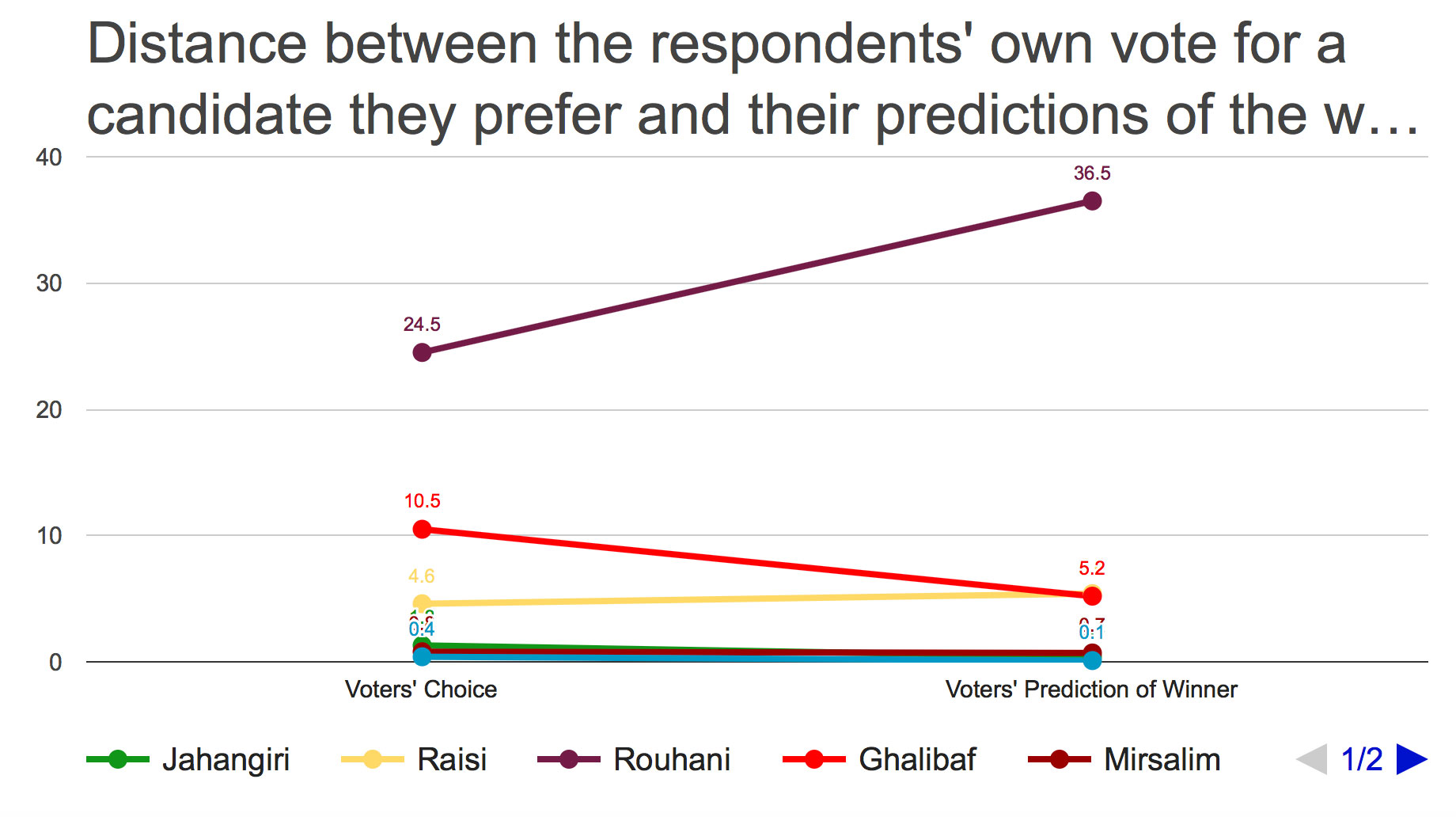

Voter Turnout: Participation in the Elections
Around 71% of respondents say they are likely or very likely to vote in the May 2017 presidential election. In contrast, 16% say there is little chance or very little chance that they will participate in the elections. Besides the 6% of respondents that say they are somewhat likely to participate in the elections, 5% of the respondents have not yet reached a decision with regards to participation.
Projections of election participation rates in polls such as this one does not neatly translate to voter turnout rate on the day of the election. Projections of the voter turnout in polls are often more than the actual turnout on the day of the election; this is not unique to the Iranian context and is relevant to all pre-election polling.
Following Presidential Debates
Following of the presidential debates divides the respondents to two groups of relatively same weight. About half of the respondents say they have followed the election debates and half of them say that they have not been following the debates. 48% of respondents have watched the debates and 2% of them have listened to the audio broadcasting of the debates.
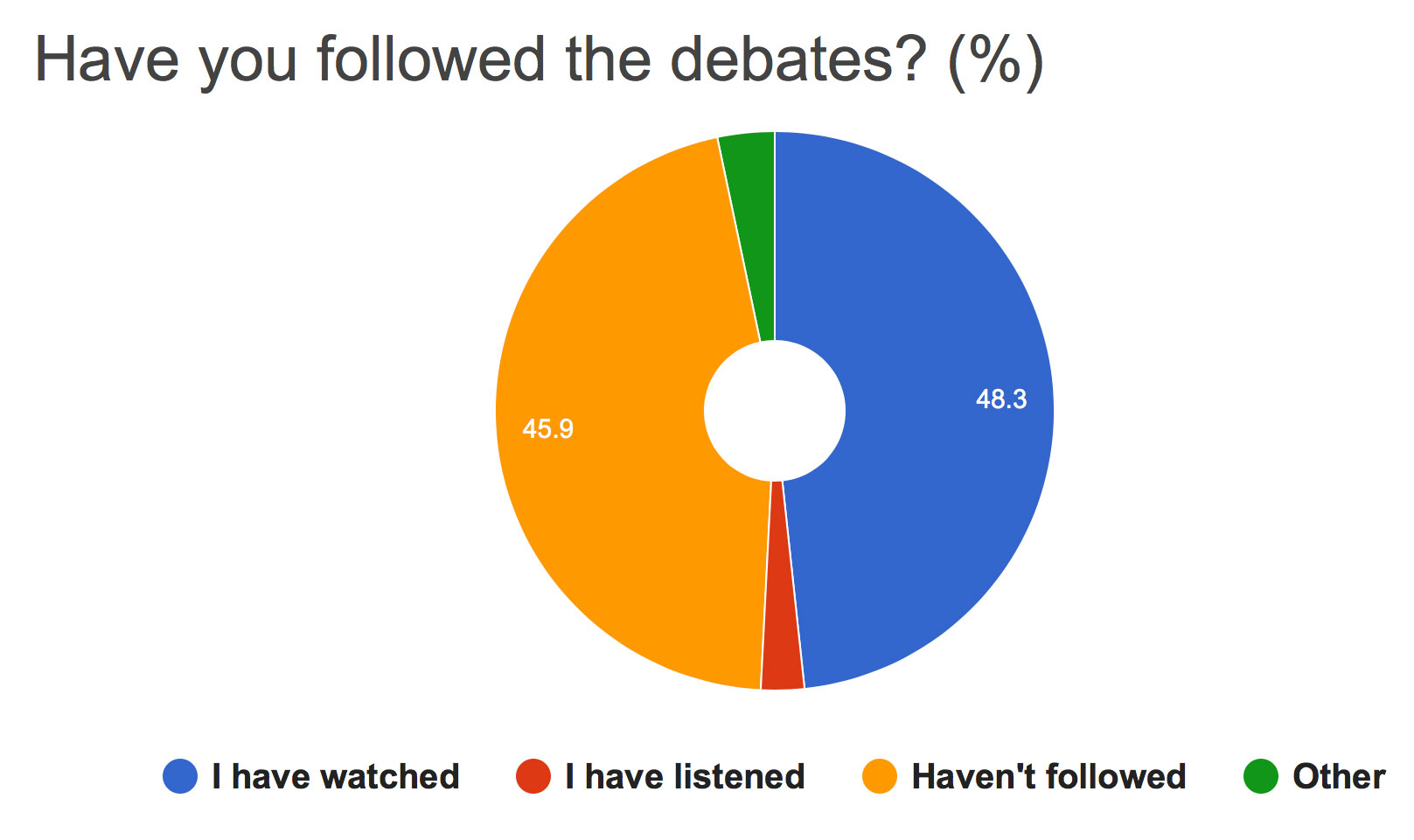
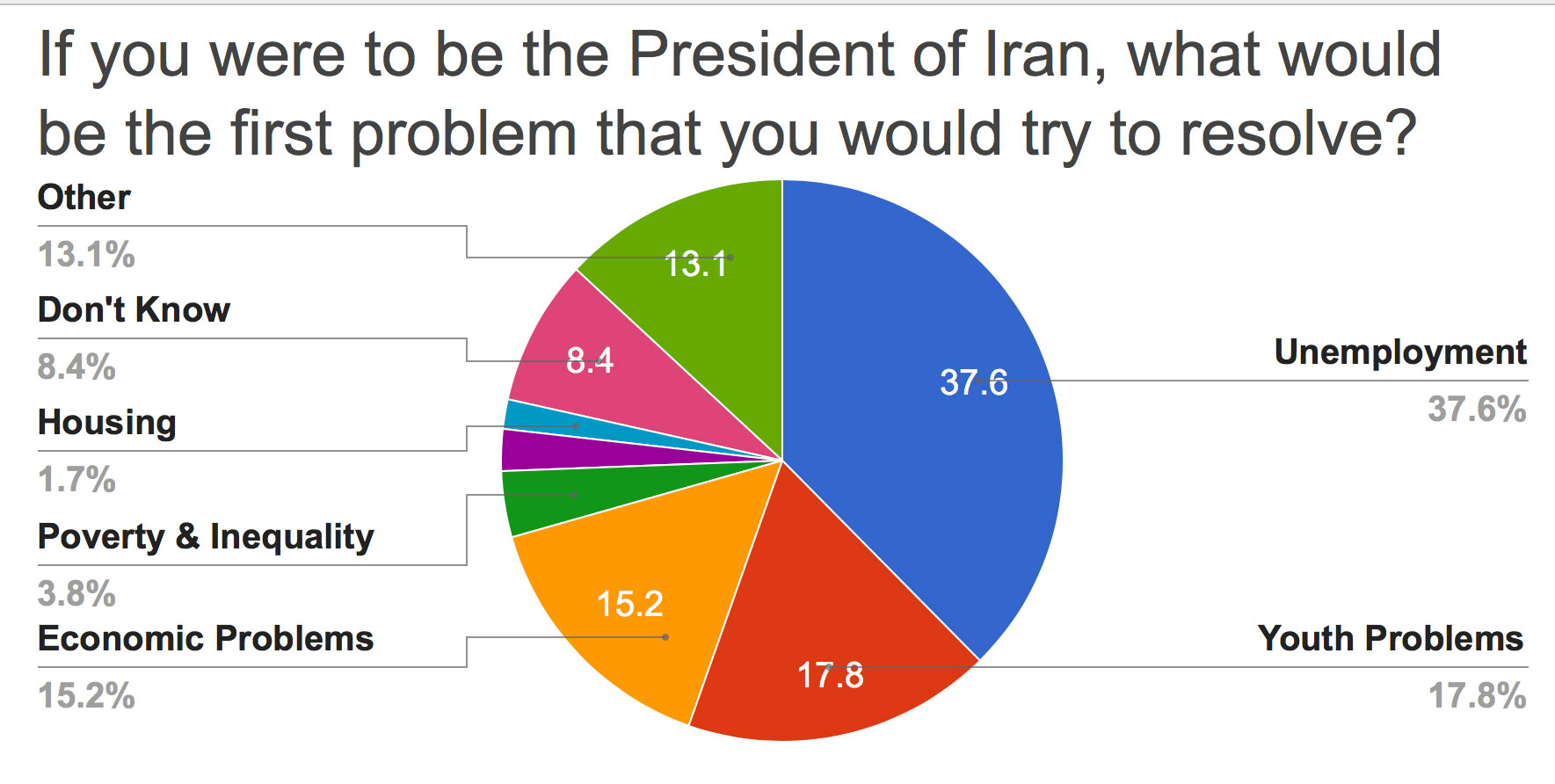
The Most Important Problems and Priorities
In order to have an understanding of the priorities of issues that the prospective president should tackle, we asked the respondents: “if you were the president what would be the first problem facing the country that you will take on?”
As expected, the first ranking issue that about 38%respondents mentioned is the problem of unemployment. Next are the problems that the youth face with concerns of the 18% of the respondents. Economic issues, including inflation and high costs of living ranks third in the set of priorities that the respondents mentioned.
Economic and political corruption, despite the attention it is receiving in the debates and in the media, is only attaining a 2% rating among the participants of this poll.
Survey Methodology:
-
This polling was carried out at a national level in Iran from 4 May 2017 to 7 May 2017 and reported on a four-day rolling average basis.
-
The interviews were conducted via phone. Interviewers were trained – both for general skills of phone polling and for the specific needs of this survey. The interviewers were selected post training after passing an interviewing skills exam.
-
The sample size was 1000 Iranians, 18 years and older, who were residing in Iran and were selected randomly.
-
Sampling methodology is a two-stage proportional sampling. It’s on the basis of each of the service operators’ market share and then simple random sampling.
-
Assuming maximum variation, the results of this survey can generalize to the whole of the 18 years and older Iranian (resident in Iran) with a margin of error of ±3.10 to ±3.90 for the 95% confidence interval (based on responses to questions).
-
The data were weighted based on the last available National Iranian Census (2011) with gender, age group and place of residence (urban/rural) as weighting variables.
-
Farsi native speaking interviewers conducted the interviews during daylight hours, local time.
-
The results of each interview was assessed twice by the interviewer and the supervising team – in terms of respondent’s trust in the interviewer and the interviewer’s assessment of the respondents’ honesty.
-
Those respondents who had received very low scores for trust and honesty have been removed from the random sample.


